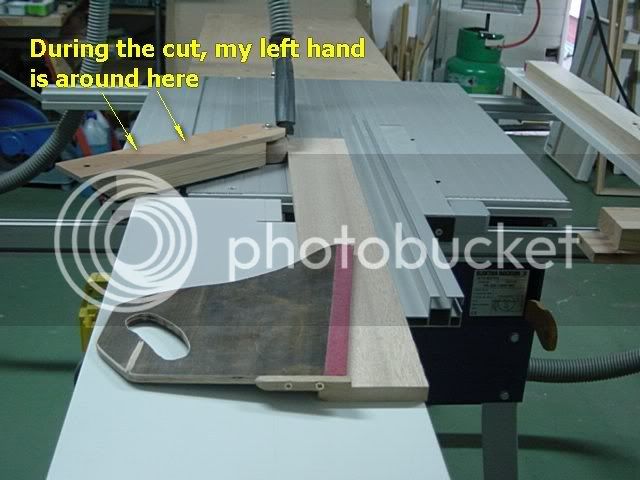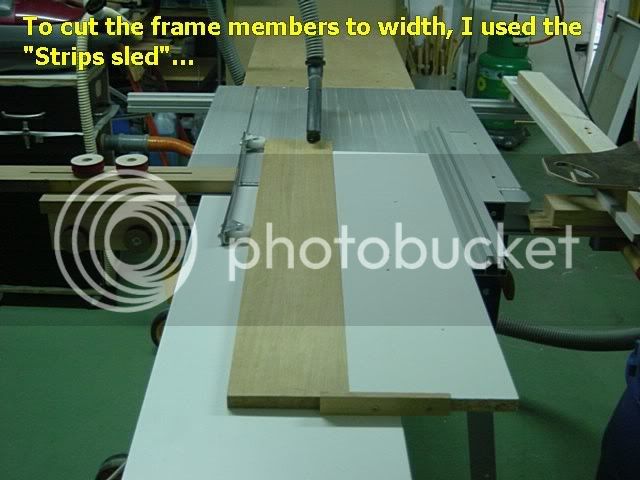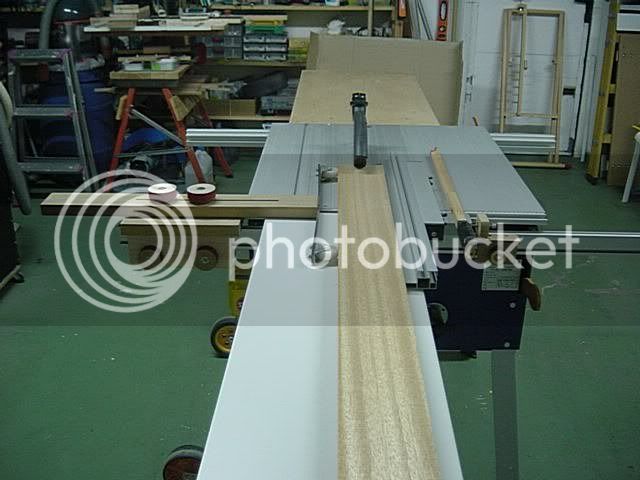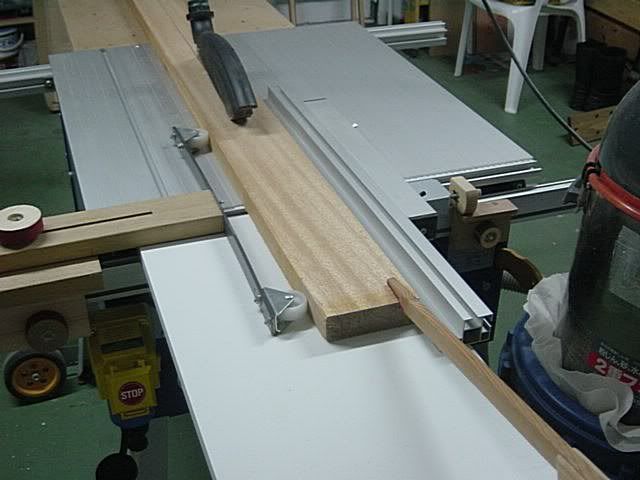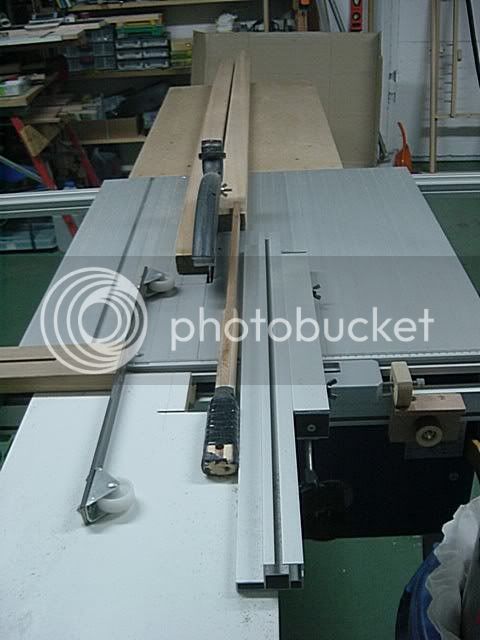jlawrence
Established Member
Hi all,
Had a minor (luckily) accident with my cheapo clarke tablesaw and it got me thinking on ways to improve the blade guard.
At the moment the guard hinges up from the rear when the wood approaches the blade. I can see the sense in this as it means when no wood is being cut the blade is fully covered. However, it has a disadvantage in that if your hand slips then the guard will hinge up to allow the hand under and towards the blade - as happened to me.
I'm wondering on the logic of making a 2 part guard. What I'm envisaging is a fixed part which you set to the height of the wood and attached to that would be a sliding part which would drop to the table to ensure the blade is pretty much covered with no wood present.
Hmm, I'll try and do a sketch of what I'm thinking of - putting it in writing isn't very clear.
What sort of guard do everyone else use ?
Oh, and my injuries were pretty superficial. Painful, annoying, but nothing major - just a couple of small (ish) gouges taken out of my thumb. It did need bandaging up and no using the thumb for over a week but it could so easily have been bye bye thumb.
Had a minor (luckily) accident with my cheapo clarke tablesaw and it got me thinking on ways to improve the blade guard.
At the moment the guard hinges up from the rear when the wood approaches the blade. I can see the sense in this as it means when no wood is being cut the blade is fully covered. However, it has a disadvantage in that if your hand slips then the guard will hinge up to allow the hand under and towards the blade - as happened to me.
I'm wondering on the logic of making a 2 part guard. What I'm envisaging is a fixed part which you set to the height of the wood and attached to that would be a sliding part which would drop to the table to ensure the blade is pretty much covered with no wood present.
Hmm, I'll try and do a sketch of what I'm thinking of - putting it in writing isn't very clear.
What sort of guard do everyone else use ?
Oh, and my injuries were pretty superficial. Painful, annoying, but nothing major - just a couple of small (ish) gouges taken out of my thumb. It did need bandaging up and no using the thumb for over a week but it could so easily have been bye bye thumb.





